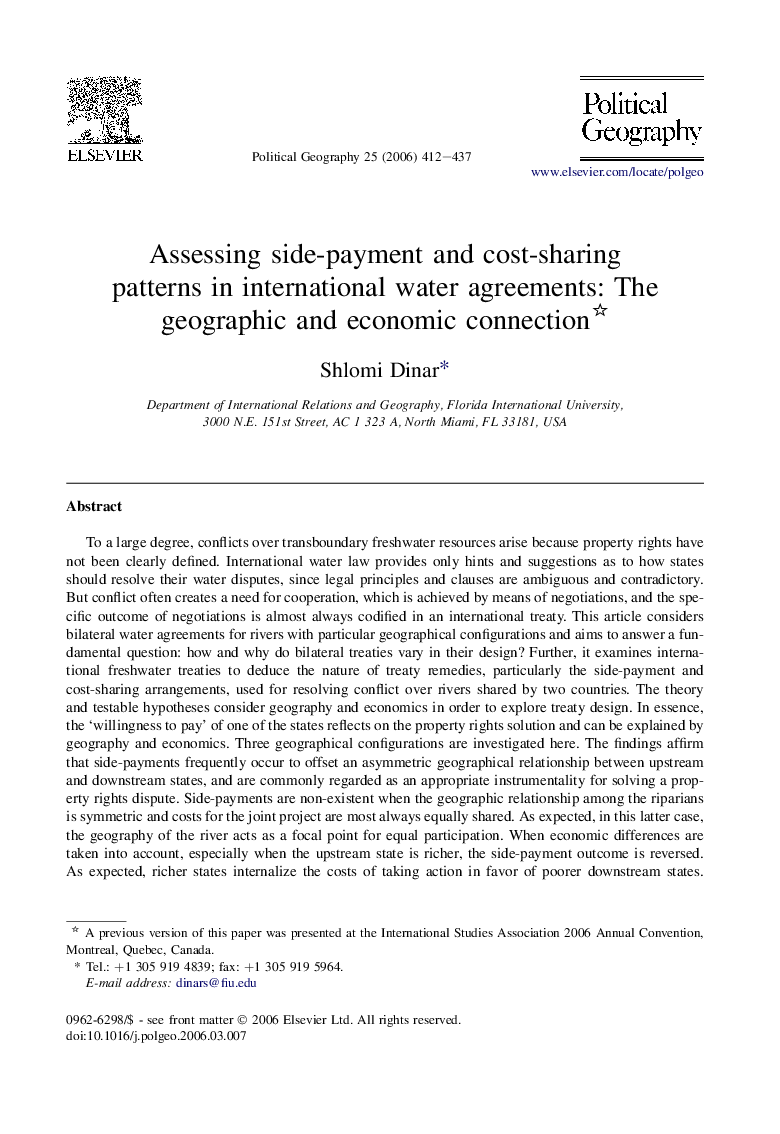| Article ID | Journal | Published Year | Pages | File Type |
|---|---|---|---|---|
| 1062445 | Political Geography | 2006 | 26 Pages |
To a large degree, conflicts over transboundary freshwater resources arise because property rights have not been clearly defined. International water law provides only hints and suggestions as to how states should resolve their water disputes, since legal principles and clauses are ambiguous and contradictory. But conflict often creates a need for cooperation, which is achieved by means of negotiations, and the specific outcome of negotiations is almost always codified in an international treaty. This article considers bilateral water agreements for rivers with particular geographical configurations and aims to answer a fundamental question: how and why do bilateral treaties vary in their design? Further, it examines international freshwater treaties to deduce the nature of treaty remedies, particularly the side-payment and cost-sharing arrangements, used for resolving conflict over rivers shared by two countries. The theory and testable hypotheses consider geography and economics in order to explore treaty design. In essence, the ‘willingness to pay’ of one of the states reflects on the property rights solution and can be explained by geography and economics. Three geographical configurations are investigated here. The findings affirm that side-payments frequently occur to offset an asymmetric geographical relationship between upstream and downstream states, and are commonly regarded as an appropriate instrumentality for solving a property rights dispute. Side-payments are non-existent when the geographic relationship among the riparians is symmetric and costs for the joint project are most always equally shared. As expected, in this latter case, the geography of the river acts as a focal point for equal participation. When economic differences are taken into account, especially when the upstream state is richer, the side-payment outcome is reversed. As expected, richer states internalize the costs of taking action in favor of poorer downstream states. When the geographical relationship between the riparians is of a symmetrical nature, while the economic relationship between the states is of an asymmetrical nature, the richer state often assumes the bulk of the cost burden. In this way, it provides a side-payment to the poorer state. Such patterns reveal how property rights disputes over issues such as water quantity, hydropower, pollution abatement, and flood control have been concluded. They suggest how ongoing disputes may be resolved.
